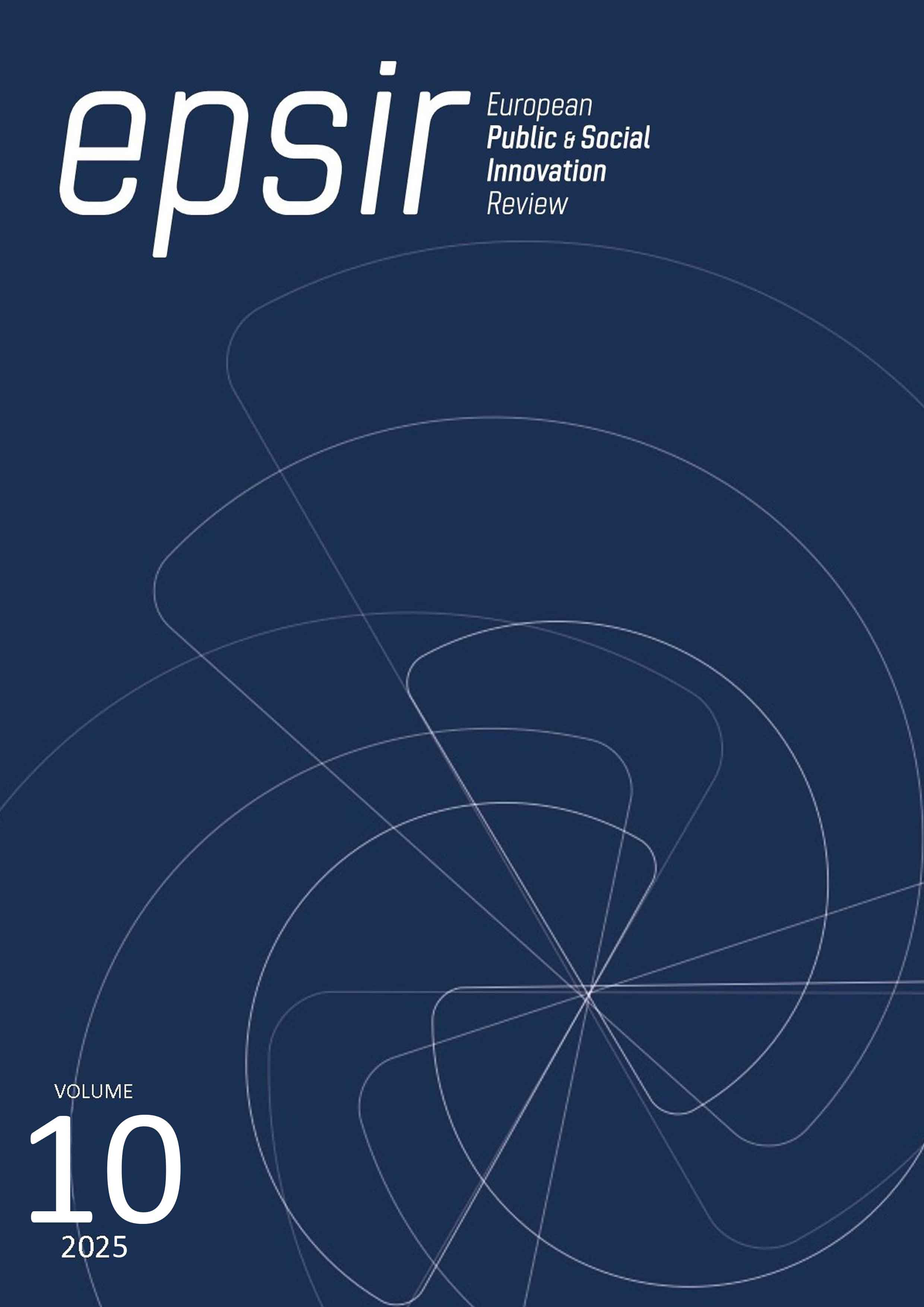Agronegocios sostenibles: Análisis estratégico de un grupo económico agroalimentario en Ecuador
DOI:
https://doi.org/10.31637/epsir-2025-1795Parole chiave:
agroindustria, diversificación relacionada, economía circular, innovación sostenible, modelo de negocios, marca corporativa, pentágono estratégico, valor compartidoAbstract
Introducción: En Ecuador los grupos económicos en el sector de los agronegocios represetan una tipología empresarial que ha lo largo de la historia se han consolidado en función de sus estrageias implementadas. En este sectro Pronaca se consolida como una empresa de vanguiardia como un modelo de negocio sostenible que aplica los principios relacionados con los Objetivos de desarrollo Sostenible Metodología: Cualitativa e interpretativa, empleando entrevistas semiestructuradas en profundidad. Resultados: Al aplicar el pentagono estruturado de análisis estratégicos se pudo identificar como la organización estudiada establece su modelo de negocios sostenible en el sector de los agronegocios y se consolidad como una organizacipoin lider. Discusión: La sostenibilidad como ruta estratégica garantiza una aplicación correcta de valor compartido hacia los diferentes grupos de interes y de impacto social. Conclusiones: La estrategia de sostenibilidad coporativa es clave para la perdurabilidad empresarial.
Downloads
Riferimenti bibliografici
Balcázar, P., González Arratia, N., Gurrola, G. y Moysen, A. (2013). Investigación cualitativa (2a Ed). Universidad Autónoma del Estado de México.
Barney, J. (1991). Firm resources and sustained competitive advantage. Journal of Management, 19(17), 99-120. https://doi.org/10.1177/014920639101700108 DOI: https://doi.org/10.1177/014920639101700108
Dahse, F. (1979). Mapa de la extrema riqueza. Aconcagua.
Davis, J. y Goldberg, R. (2021). A concept of agribusiness. Harvard University.
Farías, P. (2014). Business group characteristics and firm operating performance: evidence from Chile. Academia Revista Latinoamericana de Administración, 27(2), 226-235. https://doi.org/10.1108/ARLA-08-2013-0115 DOI: https://doi.org/10.1108/ARLA-08-2013-0115
Garrette, B., Dussauge, P. y Durand, R. (2009). Strategor: toute la strategie d’entreprise. Dunod
Guest, G., Mc Queen, K. y Namey, E. (2014). Applied thematic analysis. SAGE
Guba, E. G. y Lincoln, Y. S. (1994). Competing paradigms in qualitative research. En N. K. Denzin y Y. S. Lincoln (Eds.), Handbook of qualitative research (pp. 105-117). SAGE
Grupo Strategor (1997). Estrategia, estructura, decisión e identidad: Política general de la empresa. Masson.
Guerrero, M., Vanoni, G. y Omaña, A. (2022). Social Solidarity Entrepreneurship: Salinas Group of Ecuador (1990-2020). TECHNO REVIEW. International Technology, Science and Society Review, 12(4), 1-9. https://doi.org/10.37467/revtechno.v11.4477 DOI: https://doi.org/10.37467/revtechno.v11.4477
Hernández, R., Fernández, C. y Baptista, P. (2010). Metodología de la Investigación. Mc Graw Hill.
Hernández, R., Fernández, C. y Baptista, P. (2014). Metodología de la Investigación. Mc Graw Hill.
Hennink, M., & Weber, M. B. (2013). Quality issues of court reporters and transcriptionists for qualitative research. Qualitative Health Research, 23(5), 700-710.
https://doi.org/10.1177/1049732313481502 DOI: https://doi.org/10.1177/1049732313481502
Herrera, N. (2012). La crisis financiera de 1998-99 y el relevo de los grupos financieros en el Ecuador (Tesis de Maestría Facultad Latinoamericana de Ciencias Sociales, Quito, Ecuador). Repositorio institucional Flacso Andes https://repositorio.flacsoandes.edu.ec/handle/10469/5276
Kvale, S. (2007). Doing interviews. (1a Ed.). SAGE. DOI: https://doi.org/10.4135/9781849208963
Lemaire, J. P. (1997). Stratégies d’internationalisation. Dunod.
Misas-Arango, G. (1975). Contribución al estudio del grado de concentración en la industria colombiana. Ediciones Tiempo Presente.
Navarro, G. (1976). La concentración de capitales en el Ecuador. Ediciones Solitierra.
Pearce, J. Freeman, E. y Robinson, R. (1987). The tenuous link between formal strategic planning and financial performance. Academy of Managenent Review, 12(4), 658-675. https://doi.org/10.2307/258071 DOI: https://doi.org/10.2307/258071
Pierson, P. (2000). Increasing returns, path dependence, and the study of politics. The American Political Science Review, 94(2), 251-267. https://doi.org/10.2307/2586011 DOI: https://doi.org/10.2307/2586011
Pronaca (2022, 26 de junio). Memoria de sostenibilidad. https://acortar.link/vcaLH4
Pronaca (2023, 2 de julio). Memoria de sostenibilidad
Porter, M. y Kramer, M. (2011). La creación de valor compartido. Harvard Business Review https://www.academia.edu/2917863/La_
Porter, M. (2013). Ventaja competitiva. Grupo Editorial Patria.
Saldaña, J. (2003). Longitudinal qualitative research: Analyzing change through time. AltaMira Press.
Servicio de rentas Internas (2024, julio 17). Grupos económicos. https://www.sri.gob.ec/grupos-economicos
Silva-Colmenares, J. (1977). Los verdaderos dueños del país: oligarquías y monopolios en Colombia. Fondo Editorial Suramérica.
Sydow, G., Schreyögg, G. y Koch, J. (2009). Organizational path dependence: opening the black box. Academy of Management Review, 34(4), 689–709. https://doi.org/10.5465/amr.34.4.zok689 DOI: https://doi.org/10.5465/amr.34.4.zok689
Vanoni, G. A. y Rodríguez Romero, C. A. (2017). Estrategias de crecimiento implementadas por los grupos económicos del Ecuador (2007-2016). Innovar, 27(65), 39-55. https://doi.org/10.15446/innovar.v27n65.65060 DOI: https://doi.org/10.15446/innovar.v27n65.65060
Vanoni Martínez, G. (2020). Estrategias de crecimiento de los conglomerados: un estudio de cuatro grupos ecuatorianos [tesis doctoral Universidad del Rosario, Colombia]. Repositorio Institucional UR. https://acortar.link/mfrwYu
Vanoni, G. (2021). Estrategias de crecimiento de los conglomerados: un estudio de cuatro grandes grupos ecuatorianos. [Tesis de doctorado Universidad del Rosario]. Repositorio Institucional E-docUR. https://acortar.link/mfrwYu
Wong, D., Parodi, C. y Monsalve, M. (2014). La mediana empresa familiar peruana y la creación de ventajas competitivas. En M. Monsalve (Ed.), Grupos económicos y mediana empresa familiar en America Latina (pp. 177-199). Universidad del Pacífico
Downloads
Pubblicato
Come citare
Fascicolo
Sezione
Licenza
Copyright (c) 2025 Giuseppe Vanoni, Alfonso Omaña Guerrero

Questo lavoro è fornito con la licenza Creative Commons Attribuzione - Non commerciale - Non opere derivate 4.0 Internazionale.
Authors who publish with this journal agree to the following terms:- Authors retain copyright and grant the journal right of first publication with the work simultaneously licensed under Creative Commons Non Commercial, No Derivatives Attribution 4.0. International (CC BY-NC-ND 4.0.), that allows others to share the work with an acknowledgement of the work's authorship and initial publication in this journal.
- Authors are able to enter into separate, additional contractual arrangements for the non-exclusive distribution of the journal's published version of the work (e.g., post it to an institutional repository or publish it in a book), with an acknowledgement of its initial publication in this journal.
- Authors are permitted and encouraged to post their work online (e.g., in institutional repositories or on their website) prior to and during the submission process, as it can lead to productive exchanges, as well as earlier and greater citation of published work (See The Effect of Open Access).



